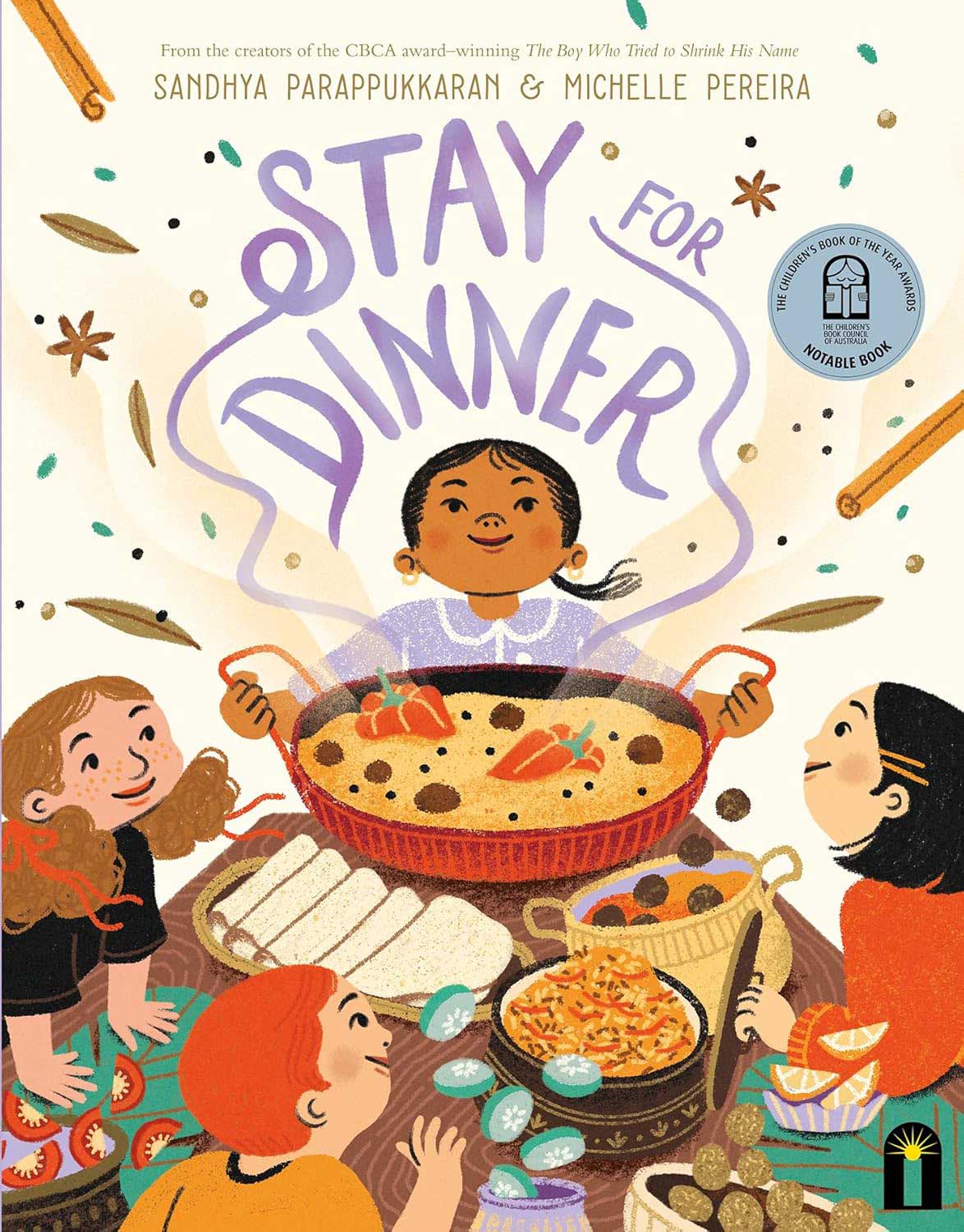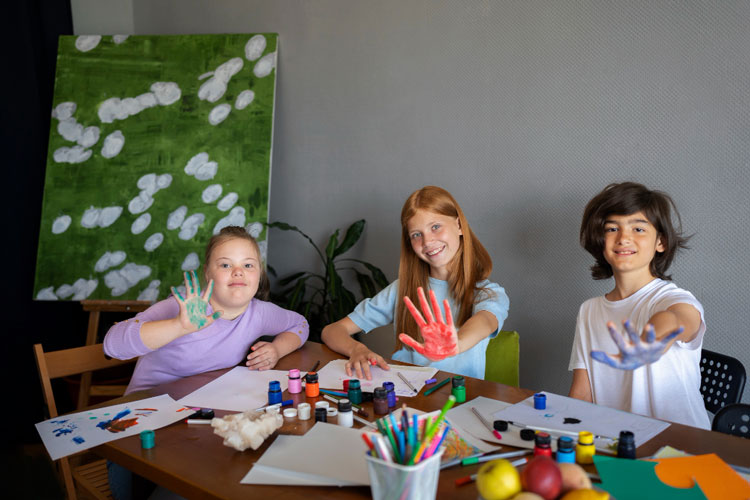Stay for Dinner is a powerful story from multi-award-winning creators of The Boy Who Tried to Shrink His Name that celebrates culture and connection through food.
Reshma loves dinnertime with her family. Her family eat with their hands – not just finger food type–eating, but hands-on squishy eating. When she’s invited to stay for dinner at her friends’ homes, she finds out that they all eat in different ways. Some go ting ting with their cutlery, and others go click clack with their chopsticks.
What will her friends say when they see her family eat with their hands?
★ WINNER of the 2024 Multicultural NSW Award at the NSW Premier’s Literary Awards ★
★ 2024 CBCA Notable Picture Book of the Year ★
★ A Bookstagram Best Picture Book of 2023 ★
★Longlisted for the inaugural DANZ (Diversity in Australia and Aotearoa New Zealand) Children’s Book Award ★
‘Stay for Dinner is a requirement on every bookshelf as a resource that teaches vital social skills and cultural appreciation—it’s a salve for everyday anxieties any child may feel in regards to fitting in with their peers. This picture book is a wonderful revelation of the true diversity evident within Australia.’ – Books+Publishing
‘The words and images [in Stay for Dinner] combine perfectly like a feast. This is an important book about many more things than food. It highlights the importance of family, friendship, community, diversity, and acceptance—as well as delicious cuisine. Stay for Dinner is a keeper, to be read over and over again, just for the fun of it.’ – Children’s Book Council Australia




![[T4R] Stay For Dinner Reading Unit for Year 2 [T4R] Stay For Dinner Reading Unit for Year 2](https://stevendegc.com.au/wp-content/uploads/2025/02/T4R-Stay-For-Dinner-UnitOverviewCover-1024x627.jpg)
![[T4R] Stay For Dinner: L1 Background Knowledge [T4R] Stay For Dinner: L1 Background Knowledge](https://stevendegc.com.au/wp-content/uploads/2025/01/T4R-Stay-For-Dinner-L1-Cover-1.jpg)
![[T4R] Stay For Dinner: L10 Evaluation [T4R] Stay For Dinner: L10 Evaluation](https://stevendegc.com.au/wp-content/uploads/2025/02/T4R-Stay-For-Dinner-L10-Cover-1024x628.jpg)
![[T4R] Stay For Dinner: L2 Making Predictions [T4R] Stay For Dinner: L2 Making Predictions](https://stevendegc.com.au/wp-content/uploads/2025/01/T4R-Stay-For-Dinner-L2-Cover-1.jpg)
![[T4R] Stay For Dinner: L3 Book Talk [T4R] Stay For Dinner: L3 Book Talk](https://stevendegc.com.au/wp-content/uploads/2025/01/T4R-Stay-For-Dinner-L3-Cover.jpg)
![[T4R] Stay For Dinner: L4 Literal Retrieval [T4R] Stay For Dinner: L4 Literal Retrieval](https://stevendegc.com.au/wp-content/uploads/2025/02/T4R-Stay-For-Dinner-L4-Cover.jpg)
![[T4R] Stay For Dinner: L5 Vocabulary [T4R] Stay For Dinner: L5 Vocabulary](https://stevendegc.com.au/wp-content/uploads/2025/02/T4R-Stay-For-Dinner-L5-Cover.jpg)
![[T4R] Stay For Dinner: L6 The Message [T4R] Stay For Dinner: L6 The Message](https://stevendegc.com.au/wp-content/uploads/2025/02/T4R-Stay-For-Dinner-L6-Cover-1024x627.jpg)
![[T4R] Stay For Dinner: L7 Cultural Respect [T4R] Stay For Dinner: L7 Cultural Respect](https://stevendegc.com.au/wp-content/uploads/2025/02/T4R-Stay-For-Dinner-L7-Cover-1024x626.jpg)
![[T4R] Stay For Dinner: L8 Respectful Relationships [T4R] Stay For Dinner: L8 Respectful Relationships](https://stevendegc.com.au/wp-content/uploads/2025/02/T4R-Stay-For-Dinner-L8-Cover-1024x627.jpg)
![[T4R] Stay For Dinner: L9 Summarising [T4R] Stay For Dinner: L9 Summarising](https://stevendegc.com.au/wp-content/uploads/2025/02/T4R-Stay-For-Dinner-L9-Cover-1024x626.jpg)



Leave a Reply